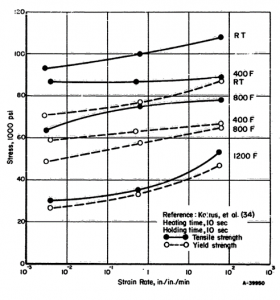an email newsletter released every month highlighting the latest articles, events, technical inquires, and voices from the community
High Strain Rate Material Properties
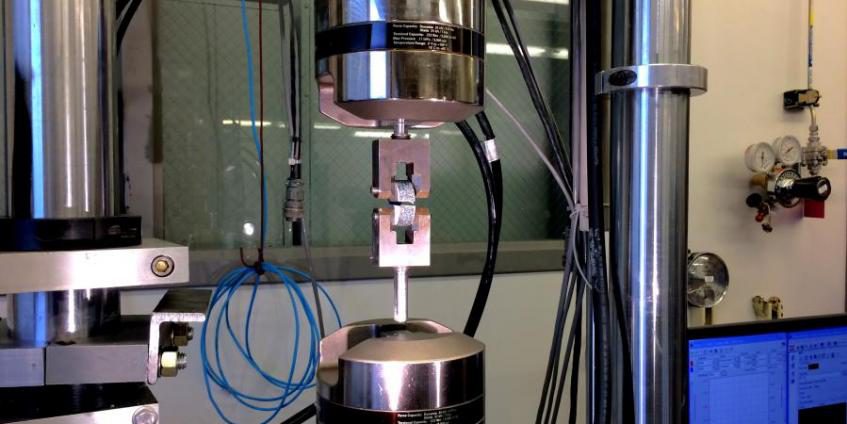
Posted on November 21, 2018 | Completed on November 21, 2018 | By: Doyle T. Motes III
What are the material properties of common structural building materials in the strain rate range of 0.001 to 100 s-1?
The Defense Systems Information Analysis Center (DSIAC) received a request for information on material properties of different common construction/building materials as functions of strain rates (in particular, steels corresponding to the American Society of Testing and Materials 992 and 1003 standards and concrete materials). DSIAC compiled a list of relevant works for this topic with the assistance of subject matter experts at Texas Research Institute Austin, Southwest Research Institute, and The University of Texas at Austin.
1.0 Introduction
The inquirer requested information on common structural building material properties related to strain rates. In particular, the inquirer desired properties for common building materials at higher strain rates (of interest are 0.001 to 100 s-1). The materials of interest at the time of the inquiry were American Society of Testing and Materials (ASTM) Grade A992 and A1003 steels and other common building materials that have changed in the past 50 years, such as concrete.
The Defense Systems Information Analysis Center (DSIAC), with support from subject matter experts (SMEs) from Texas Research Institute Austin (TRI Austin), Southwest Research Institute (SwRI), and the University of Texas at Austin (UT Austin), completed a literature search using open sources, university libraries, and discussions with specific SMEs from SwRI and UT Austin.
The SwRI SME (Timothy J. Holmquist) specifically mentioned that there are limited data available in the open literature on material properties as functions of higher strain rates for both steel and concrete material systems.
2.0 ASTM Grades A992 and A1003 Steel Material Properties as Functions of Strain Rate
ASTM Grade A992 steel is a low-carbon steel (low alloy or mild steel) with small amounts of chromium, copper, and nickel, which typically has a tensile strength in the range of 40–70 ksi. This alloy was designed to economically replace the older ASTM A36 and A572 steel standards, which were long-used standard materials for bridges, buildings, and many other structures [1]. No data were found during Internet and Defense Technical Information Center (DTIC) searches pertinent to this TI.
ASTM Grade A1003 steel is a replacement for various materials (ASTM A653, A792, and A875 standards) and covers coated sheet steel used in the manufacture of cold-formed framing members such as studs, joists, and track and is available in a wide range of structural grades. No data were found during Internet and DTIC searches pertinent to this TI.
3.0 Other Mild/Low-Carbon Steel Alloy Material Properties as Functions of Strain Rate
High-strain material properties for several other steel alloys were identified as part of the search for the specific materials requested in the TI.
- Johnson et al. investigated American Iron and Steel Institute (AISI) 4340 steel and AISI 1006 steel at strain rates as high as 100,000 s-1 (the work is provided as part of the TI) [2].
- Johnson et al. also investigated AISI 4340 steel at strain rates of 0.009–117 s-1 with a focus on model validation and fracture analysis [3].
- Moon and Campbell investigated normalized AISI 4130 steel and AISI 301, 17-7PH, AM-350, and AISI 321 stainless steels over a wide range of strain rates (0.001–1000 s-1) and found that the yield strength increased with the strain rate (as shown in Figure 1) [4].
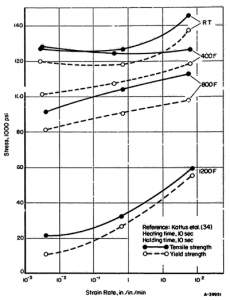
Figure 1: (Top) Strain Rates for Normalized AISI 4130 Alloy Steel Sheet (Longitudinal Specimens, 0.040-inch Thick) and (bottom) for Hardened AISI 4130 Alloy Steel Sheet (Longitudinal Specimens, 0.040-inch Thick, Austenized at 1570°F, Oil Quenched, and Temperate at 1000°F) [4].
4. Campbell and Eleiche investigated shear strength dependence on strain rate for mild steel at strain rates from 0.001 to 1000 s-1 [5].
5. Uenishi et al. investigated the dynamic effects on material properties for a mild steel to optimize car body structures during crash events in 2003 [6].
6. E. El-Magd published a study on the material properties of mild steel at high strain rates and a wide range of temperatures in 1994 (as shown in Figure 2) [7].
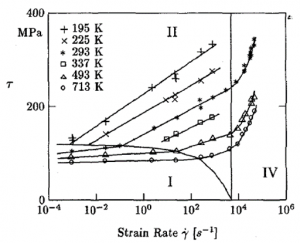
Figure 2: Temperature vs. Shear Strain Rate for Mild Steel [7].
7. Singh et al. investigated moderate and high strain rate effects on tensile and compressive properties in two different mild steels. The composition of the first steel was carbon (C) = 0.16, silicon (Si) = 0.27, manganese (Mn) = 0.77, sulfur (S) = 0.016, and phosphorus (P) = 0.024. The composition of the second steel was C = 0.18, Si = 0.28, Mn = 0.73, S = 0.017, and P = 0.024, and the balance in each type of steel was iron. Singh et al. reported on a wide range of experimental data (as shown in Figure 3) [8].
8. More recent work was performed by Paul et al. on ultra-low-carbon, low-carbon, and micro-alloyed steel sheet at low to intermediate strain rates (0.0007–239 s-1, as shown in Figure 4) [9].
9. The report on the 2001 World Trade Center disaster provides a variety of material data on different grades of structural steels, but none of these is immediately relevant to the TI [10].
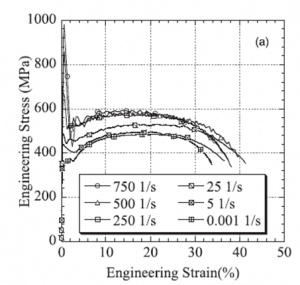
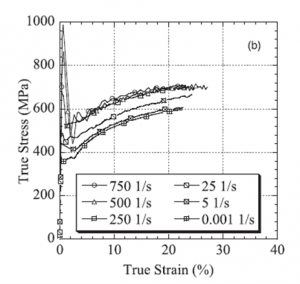
Figure 3: Engineering Stress-Strain (top) and True Stress-Strain (bottom) for the Mild Steel Alloys Discussed in Singh et al. [8].
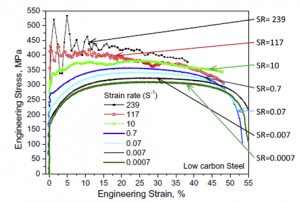
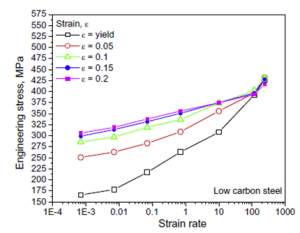
Figure 4: (Top) Engineering Stress-Strain Curves for Low-Carbon Steel at Different Strain Rates and (bottom) Strain Rate Sensitivity Curves at Various Strains for Low-Carbon Steel [9].
4.0 Concrete Material Properties as Functions of Strain Rate
Several works were found that had readily available data on concrete material properties as a function of strain rate.
- A. M. Rajendran published an extensive report that provided high strain rate data on the mechanical properties of a wide range of metals (none of which were pertinent to this TI), ceramics, and concrete (Figure 5) [11].
- Johnson et al. describe strain rate constants for modeling concrete behavior at different strain rates [12].
- High-strain concrete data were also generated by Holmquist et al. in 1993 for projectiles penetrating concrete [13].
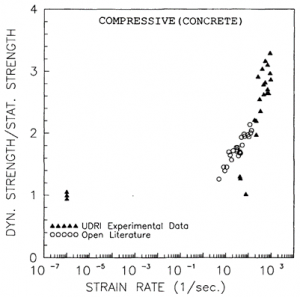
Figure 5: Effect of Strain Rate on the Compressive Strength of Concrete [11].
For the concrete data, fabrication data on the types of concrete (cement and aggregate cure times, environments, etc.) were not always included in the work. This lack of fabrication data may limit the relevance of the data identified as part of this TI, but the information provided is a good starting point.
References
[1] Brockenbrough, R., and F. Merritt. “Structural Steel Designer’s Handbook.” 5th Edition, McGraw-Hill, 2011.
[2] Johnson, G., and W. H. Cook. “A Constitutive Model for Metals Subjected to Large Strains, High Strain Rates, and High Temperatures.” 7th International Symposium on Ballistics, The Hague, The Netherlands, April 1983.
[3] Johnson, G., and W. H. Cook. “Fracture Characteristics of Three Metals Subjected to Various Strains, Strain Rates, Temperatures and Pressures.” Engineering Fracture Mechanics, vol. 21, no. 1, pp. 31–48, 1985.
[4] Moon, D. P., and J. E. Campbell. “Effects of Moderately High Strain Rates on the Tensile Properties of Metals.” DTIC Memorandum 142, 18 December 1961.
[5] Eleiche, A. M., and J. D. Campbell. “The Influence of Strain-Rate History and Temperature on the Shear Strength of Copper, Titanium, and Mild Steel.” AFML-TR-76-90, 1976.
[6] Uenishi, A., H. Yoshida, Y. Kuriyama, and M. Takahashi. “Material Characterization at High Strain Rates for Optimizing Car Body Structures for Crash Events.” Nippon Steel Technical Report No. 88, July 2003.
[7] El-Magd, E. “Mechanical Properties at High Strain Rates.” Journal de Physique IV Colloque, vol 4, pp. C8-149-C8-170, 1994.
[8] Singh, N. K., E. Cadoni, M. K. Singha, and N. K. Gupta. “Dynamic Tensile and Compressive Behavior of Mild Steel at Wide Range of Strain Rates.” Journal of Engineering Mechanics, vol. 139, issue 9, pp. 1197-1206, 2013.
[9] Paul, S. K., A. Raj, P. Biswas, G. Manikandan, and R. K. Verma. “Tensile Flow Behavior of Ultra Low Carbon, Low Carbon, and Micro Alloyed Steel Sheets for Auto Application Under Low to Intermediate Strain Rate.” Materials and Design, vol. 57, pp. 211–217, 2014.
[10] Luecke, W. E., J. McColskey, C. N. McCowen, S. W. Banovic, R. J. Fields, T. Foecke, T. A. Siewert, and F. W. Gayle. “Federal Building and Fire Safety Investigation of the World Trade Center Disaster – Mechanical Properties of Structural Steels,” NIST NCSTAR 1-3D, 2005.
[11] Rajendran, A. M. “High Strain Rate Behavior of Metals, Ceramics, and Concrete.” WL-TR-92-4006, April 1992.
[12] Johnson, G., T. Holmquist, and C. Gerlach. “Strain-Rate Effects Associated with the HJC Concrete Model.” DYMAT 2018 – 12th International Conference on the Mechanical and Physical Behavior of Materials Under Dynamic Loading, 2018.
[13] Holmquist, T. J., G. R. Johnson, and W. H. Cook. “A Computational Constitutive Model for Concrete Subjected to Large Strains, High Strain Rates, and High Pressures.” 14th International Symposium on Ballistics, Quebec City, Canada, Sept. 1993.
Want to find out more about this topic?
Request a FREE Technical Inquiry!


